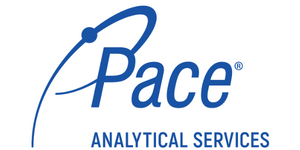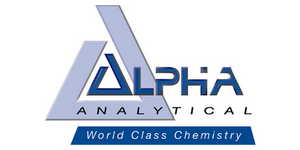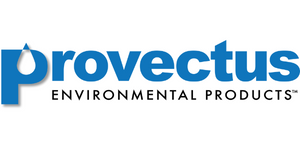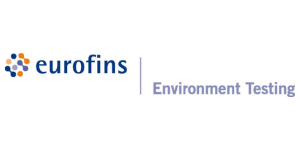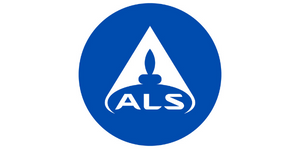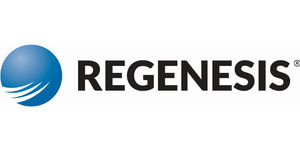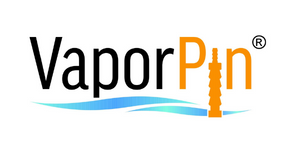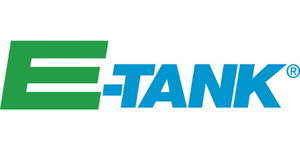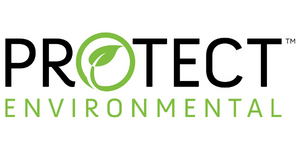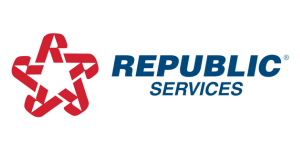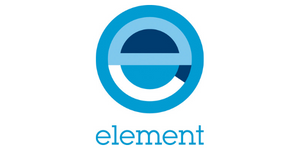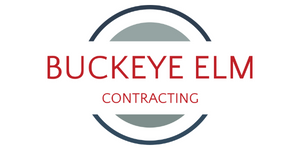WHEN:
Tuesday, September 12th
12:00pm – 4:45pm EST
WHERE:
Indiana Government Center South (Conference Center Auditorium)
402 W Washington St, Indianapolis, IN 46204
Join MSECA on Tuesday, September 12th, for an in-person educational event with a number of great presentations on PFAS:
12:00 PM – Registration & Exhibit Hall Open
1:00 PM – PFAS Legal Update
PFAS Litigation Status
Melissa Hamer, Kroger, Gardis & Regas, LLP
1:30 PM – Evolution and maturity of tools and technology to address the Dynamic PFAS
The presentation will provide an update of the current PFAS regulatory landscape and then transition to the state of the market with regard to PFAS tools and technologies for the identification, characterization and treatment of PFAS.
Tools will include advanced analytical methods, sensors and passive sampling devices. Treatment will focus on separation, concentration and destruction technologies and commercial readiness, and the use of treatment train/lifecycle solution approaches.
Dan Longbrake, Battelle
Daniel Longbrake joined Battelle in January 2021 as the Commercial Business Lead for PFAS and Environment. He is responsible for developing and executing go-to-market strategies and nurturing client relationships by positioning Battelle as a trusted partner to secure long-term mutually beneficial business relationships with Battelle’s commercial customers.
Mr. Longbrake has close to 35 years of experience in the environmental field and has held national leadership positions related to business development and sales, business operations and technical project management.
Prior to joining Battelle, Daniel worked for TRC from 2011 to 2021. Mr. Longbrake held a variety of roles with increasing responsibilities that included leading the go-to-market strategy for PFAS, establishing TRC’s national account management program, and developing the format for sales and business development processes. In those positions, Daniel led mutil-functional teams and provided leadership in goal setting and executing strategy, tactics, and actions to achieve sales and financial performance goals.
Before joining TRC, Mr. Longbrake worked for several environmental consulting and engineering firms. During that time, Daniel held business development leadership, operational leadership, and principal technical oversight roles.
Daniel holds a Bachelor of Science degree in Geology from Allegheny College in Meadville, Pennsylvania.
2:15 PM – Break & Exhibit Hall
2:45 PM – In Situ PFAS Treatment with Surface-Modified Clay Adsorbents
Surface-modified clay (SMC) adsorbents are highly effective at removing perfluoroalkyl and polyfluoroalkyl substances (PFAS) from a variety of water types by partitioning. SMC adsorbents are manufactured by modifying sodium bentonite clay with an organic compound that has a high affinity for PFAS. SMC is composed of stacked layers of aluminosilicate sheets that are referred to as “platelets” and which have outer surfaces, as well as lamellar or inter-platelet spaces. The surface modification is attached to the mineral on the surface edges, as well as in the inter-platelet space to form adsorptive galleries. The presence of the organic functional groups displaces exchangeable cations, like sodium and calcium from the bentonite, which eliminates swelling when hydrated. The resulting material has a high adsorptive capacity for a variety of PFAS via electrostatic and hydrophobic mechanisms. In-situ application of SMC increases partitioning of PFAS to the solid phase, which decreases contaminated plume magnitude and protects downgradient or off-site receptors. Laboratory leaching tests show that once stabilized with SMC, PFAS leaching from soil is reduced 80-100%, depending on the PFAS chain length. These results provide evidence that the immobilized contaminant is stable and resistant to remobilization. SMC is applied to the subsurface by mixing with soil and backfilling, trenching as a sand mixture to construct a permeable reactive barrier, or injecting a powdered version via direct push technology.
Anna Willett, PE, Langan Engineering and Environmental
Anna Willett, PE has over 20 years of experience providing technical support and project management for the clean-up of contaminants in engineered systems and natural environments using conventional and innovative environmental technologies. She has expertise in PFAS assessment and treatment, chemical and biological processes, water and wastewater treatment, and soil/groundwater remediation. Past roles include directing the Interstate Technology & Regulatory Council (ITRC), project management and engineering at major consulting firms, and managing R&D at an environmental chemical products company. She has an M.S. in chemical engineering from Northwestern University and a B.S. in biological engineering from Cornell University.
3:15 PM – Colloidal Activated Carbon used to Reduce PFAS and PCE Concentrations in Groundwater to Below Michigan’s Drinking Water Limits for over Four Years
Camp Grayling in Crawford County, Michigan is a year-round training center for the Michigan Army National Guard. The Michigan Department of Military and Veteran Affairs (DMVA) have been remediating chlorinated solvents impact in the site groundwater from historical operations at the facility since the 1990’s. In 2016, the DMVA became aware of the potential contamination of PFAS from historical operations such as onsite firefighting training activities and began testing. PFAS was found commingled with a chlorinated solvent plume that was migrating towards the property boundary. The DMVA reviewed potential remedial options to test in the field such as pump and treat, but ultimately decided to test an in-situ reactive barrier application of colloidal activated carbon, an approach that is first of its kind in the State of Michigan.
Colloidal activated carbon (CAC) was selected as the remedy because of the expected rapid reductions of PFAS by removal from the dissolved mobile phase. CAC effectively increases the retardation factor of PFAS migration contaminants by multiple orders of magnitude and eliminates the exposure to down-gradient receptors through an enhanced natural attenuation remediation strategy.
This presentation will review the project design considerations, field activities, and 4.5 years of post- application data. Additionally, the presentation will answer questions related to the distribution of the colloidal activated carbon in the subsurface and expected long-term efficacy at the site.
Ryan Moore, REGENESIS
Ryan Moore has more than 22 years of experience as an environmental project manager and laboratory account executive relating to multimedia contamination sites throughout the U.S. His experience focused on in-situ groundwater and soil remediation, site investigations, corrective action evaluations, operation & maintenance of remediation systems, and environmental laboratory operations such as QA/QC evaluations, data interpretations, and business development. He has also presented at multiple conferences on in-situ remediation including events hosted by Battelle, AIPG, National Brownfields, and other environmental conferences. Ryan holds a B.S. of Environmental Studies from Manchester University, North Manchester, IN.
3:45 PM – PFAS and Agriculture
PFAS seem to be in the news more and more. Of course we hear about non-stick pans and firefighting foam—but agricultural land applications could lead to some of the largest potential impacted sites by area. What are the legal risks and potential routes forward related to PFAS impacts on agricultural ground?
Brianna Schroeder, Danzer Ag Law
Ms. Schroeder focuses her legal practice on litigating complex environmental matters, drafting contracts for agribusinesses and farms, and assisting agricultural clients with regulatory compliance and land use issues. Her experience ranges from defending dairy farms against nuisance suits to negotiating solar leases and advising farmers on wetlands compliance.
4:00 PM – Emerging PFAS regulations may require the consumer products manufacturers to rapidly adapt
PFAS (per- and polyfluoroalkyl substances) are a family of human-made chemicals found “in nonstick cookware, water-repellent clothing, stain resistant fabrics and carpets, some cosmetics, some firefighting foams, and products that resist grease, water, and oil” according to the Agency for Toxic Substances and Disease Registry (ATSDR). Until recently, these substances were viewed as useful and were FDA authorized components of food packaging materials. However, PFAS have become emerging contaminants of concern, in part because of their resistance to environmental degradation, and in part due to the evolving understanding of PFAS toxicology and their potential impact on human health and/or the environment. Although there are many toxicological unknowns, there is growing consensus that low levels of exposure to some PFAS may be of concern. Communities are rapidly recognizing the need to address these concerns through an increased pace in the development of guidance and regulations. Federal and state standards, guidance, and policies for PFAS in in consumer goods are not uniform across the U.S., creating a challenging landscape for companies to demonstrate compliance. This presentation will review the current and emerging federal and state regulations for PFAS in food packaging, including a review of the growing number of states that have passed or are considering passing PFAS restrictions in cookware, furnishings, personal care products, clothing, cosmetics, and toys.
Lisa Navarro, PhD, DABT, ERT, Ramboll
Dr. Navarro is an accomplished and performance-driven professional with extensive experience in managing product safety and regulatory assurance programs, employing strategic leadership and effective decision-making. She has over 25 years of experience with regulations that impact home and personal care products, food and flavoring ingredients, food packaging, agricultural and biocidal products, OTC drug products, and medical device materials.
4:15 PM – AFFF Replacement and Industry Impact
The presentation will provide a high level overview of Aqueous Film Forming Foam (AFFF) used for fire suppression, the transition to non-fluorinated foams, and examples of how this transition impacts government agencies, manufacturers and the waste industry.
Amy Conley, Heritage Environmental
Amy Conley is the Vice President of Strategic Solutions at Heritage Environmental Services (Heritage). Amy is an experienced leader focused on the development and execution of sales strategy, customer relationship management, and the delivery of innovative solutions created in conjunction with the Heritage Research Group.
In her current role, Amy is focused on bringing Heritage’s PFAS solutions to market. These nationwide services include PFAS separation and concentration through foam fractionation, destruction through incineration and supercritical water oxidation technologies, as well as fire suppression system line flushing and PFAS industrial cleaning solutions through Heritage Field Services. Amy works closely with Heritage R&D’s team to evaluate and develop new PFAS treatment technologies, with focus on innovative destruction solutions for short-chain PFAS, soils and solids.
Amy has over 24 years of experience in the environmental, sustainability and hazardous waste industry. She has held a variety of leadership and sales roles at Heritage since joining the company 1999, including Director of Cross Selling and Director of Business Development. Amy is a member of the Executive Committee of the Heritage Innovation Team, a mentor within the Heritage Leadership Development Program, as well as a mentor to startup companies participating in The Heritage Group Accelerator.
Amy holds a B.S degree in Environmental Science from the State University of New York College of Environmental Science and Forestry at Syracuse University. She and her family reside in Buffalo, NY.
4:30 PM – PFAS Panel Discussion
15-minute presentations from the following speakers followed by a Panel Discussion.
Brianna Schroeder, Danzer Ag Law
Lisa Navarro, Ramboll
Amy Conley, Heritage Environmental
Registration:
We are offering discounted registrations for companies registering more than two attendees. In addition, any company registering 8 or more attendees will be able to send as many people from their company as they like at one flat rate.
Click the button below to fill out the registration form or if you have any questions, please send us an email at info@mseca.org.
Thank you to our Meeting Sponsors!
MSECA Consultant Member Registration
Individual
Attendee
$35.00
Up to 3
Attendees
$70.00
Up to 5
Attendees
$105.00
Up to 7
Attendees
$140.00
Unlimited
Attendees
$175.00
MSECA Environmental Industry Professional Members Registration
An Environmental Industry Professional membership is available to individuals that do not engage in the business of providing environmental consulting, science, and/or engineering services, do not provide products and/or services to environmental consultants, and do not provide legal services, but serve in an industry capacity that would benefit from the professional education provided by the Association.
Environmental Industry Professional can Join MSECA and receive discounted registration to all our educational events.
Individual
Attendee
$35.00
MSECA Non-Member Registration
Environmental Consulting companies and individuals can Join MSECA and receive discounted registration to all our educational events.
Individual
Attendee
$55.00
MSECA Government Member Registration
Government Agency Membership is free and allows all Regulators to attend MSECA events at the Member rate. Reach out to us.
Individual
Attendee
$35.00
Up to 3
Attendees
$70.00
Up to 5
Attendees
$105.00
Up to 7
Attendees
$140.00
Unlimited
Attendees
$175.00
MSECA Student Member Registration
Full-time students who join MSECA at our Student Member rate receive complimentary registration for this event. Contact us to sign up.
Individual
Attendee
$25.00
